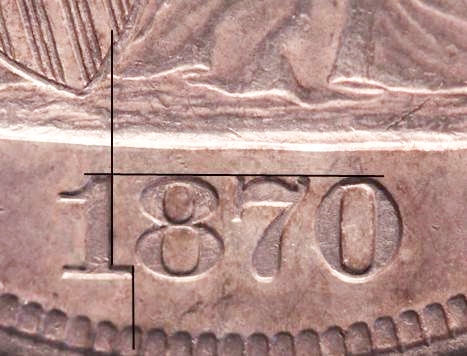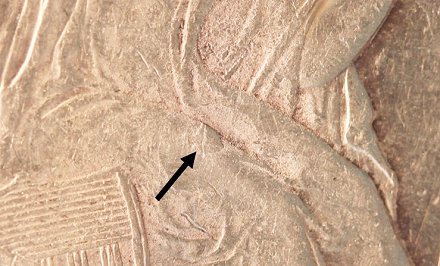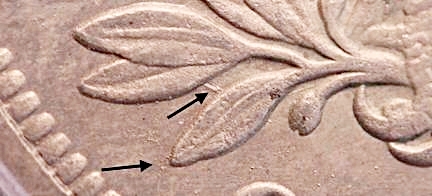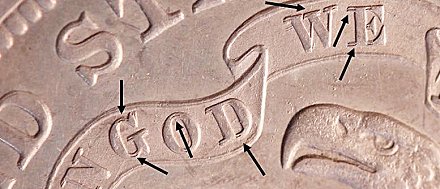|
|
Comments: This is the second of two uses of Obverse 3 (the first use is a re-marriage of these same dies) and the last of ten uses of Reverse A (including 2 re-marriages). |
Obverse 3 The photo below shows the Obverse 3 attribution grid.  1870 Obverse 3 attribution grid Obverse 3 in this second usage is identified by the large lump in Miss Liberty’s lap which has obliterated the small lump seen in the previous usage. This lump is shown in the following photo.  1870 Obverse 3 - Die state b Large die lump in lap
Our example of OC-3a exhibits die rotation of about 8 degrees counterclockwise. We believe that this rotation occurred when the dies were reused to create the re-marriage. Examples of OC-3 normally exhibit virtually no die rotation. This re-marriage is rare. We’ve seen less than 10 examples. |
Reverse A displays a very strong die line, joining the lower two leaves. Also note the die rust around the end of the lower leaf.  1870 Reverse A die line The Reverse A die is strongly doubled. This will be notable on high grades, but may not be detectable on grades below VF/XF.  1870 Reverse A die doubling
|
| Photo credits:
Obverse 3 date and state a: 1870 NGC AU58, from the Osburn-Cushing reference collection. Obverse 3 state b: 1870 PCGS #81183554 AU50, from the Osburn-Cushing reference collection. Reverse A: 1870 PCGS PR61 (mis-attributed as a proof by PCGS), from the Osburn-Cushing reference collection. |
